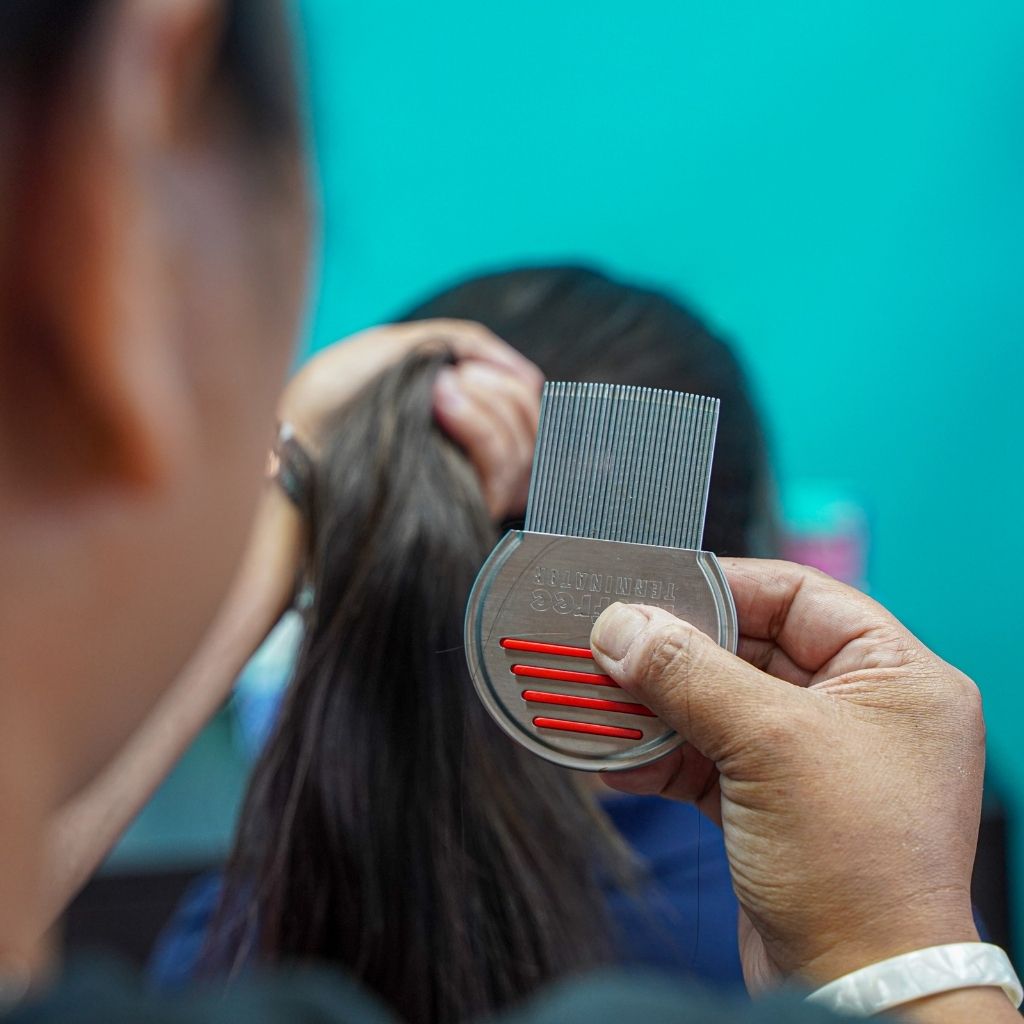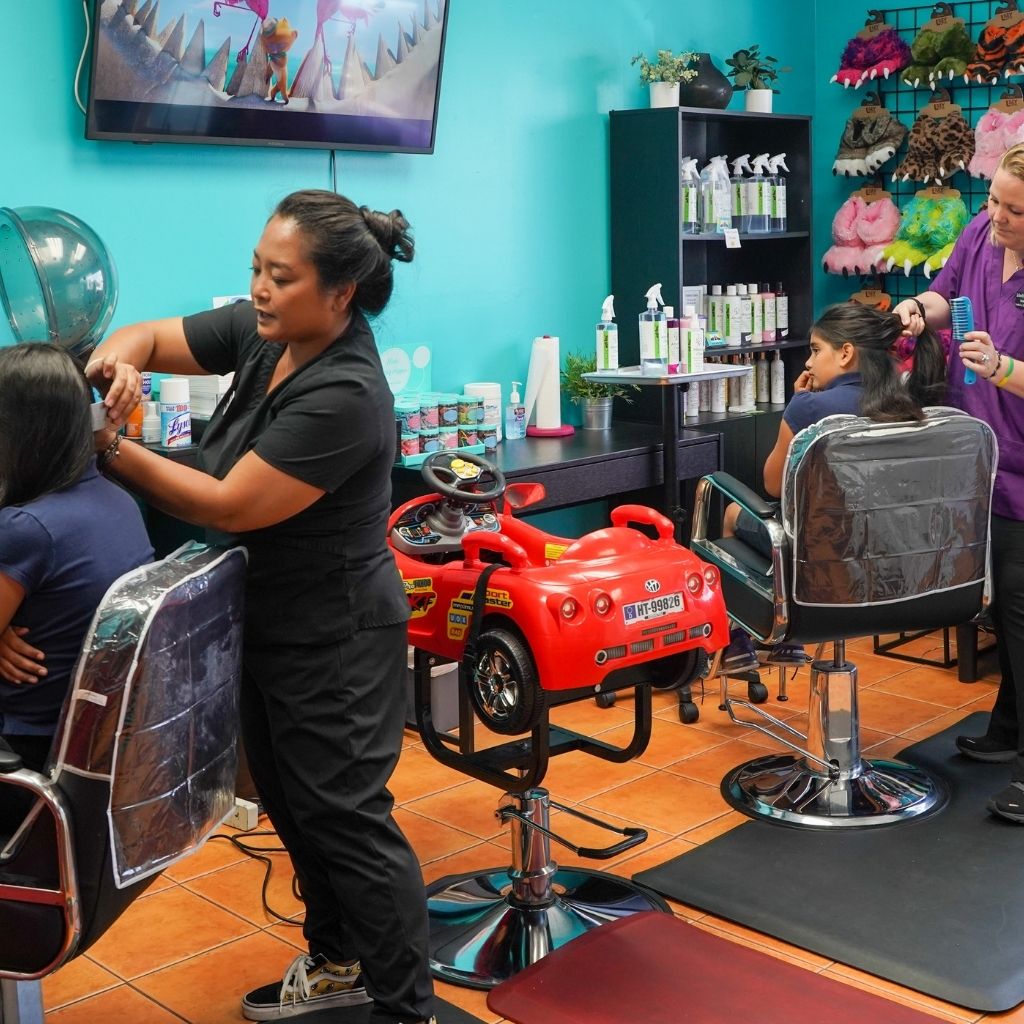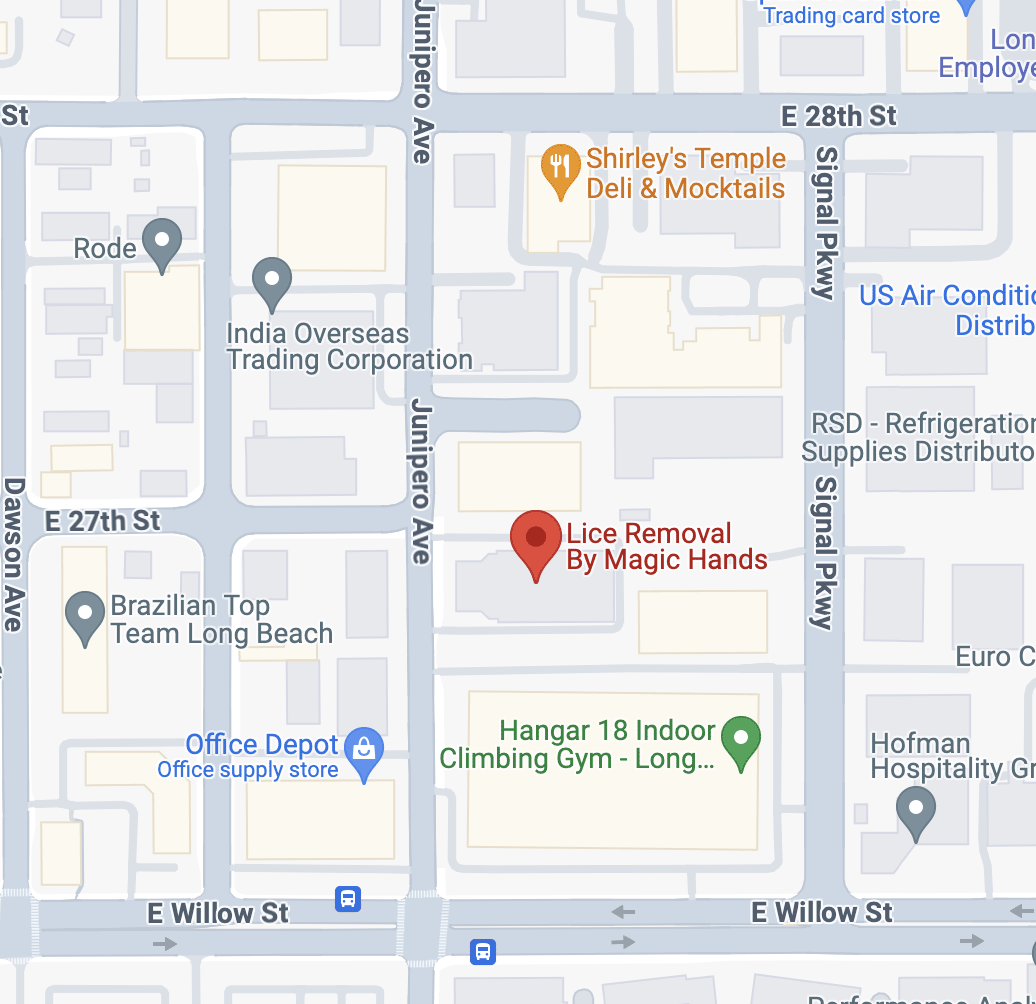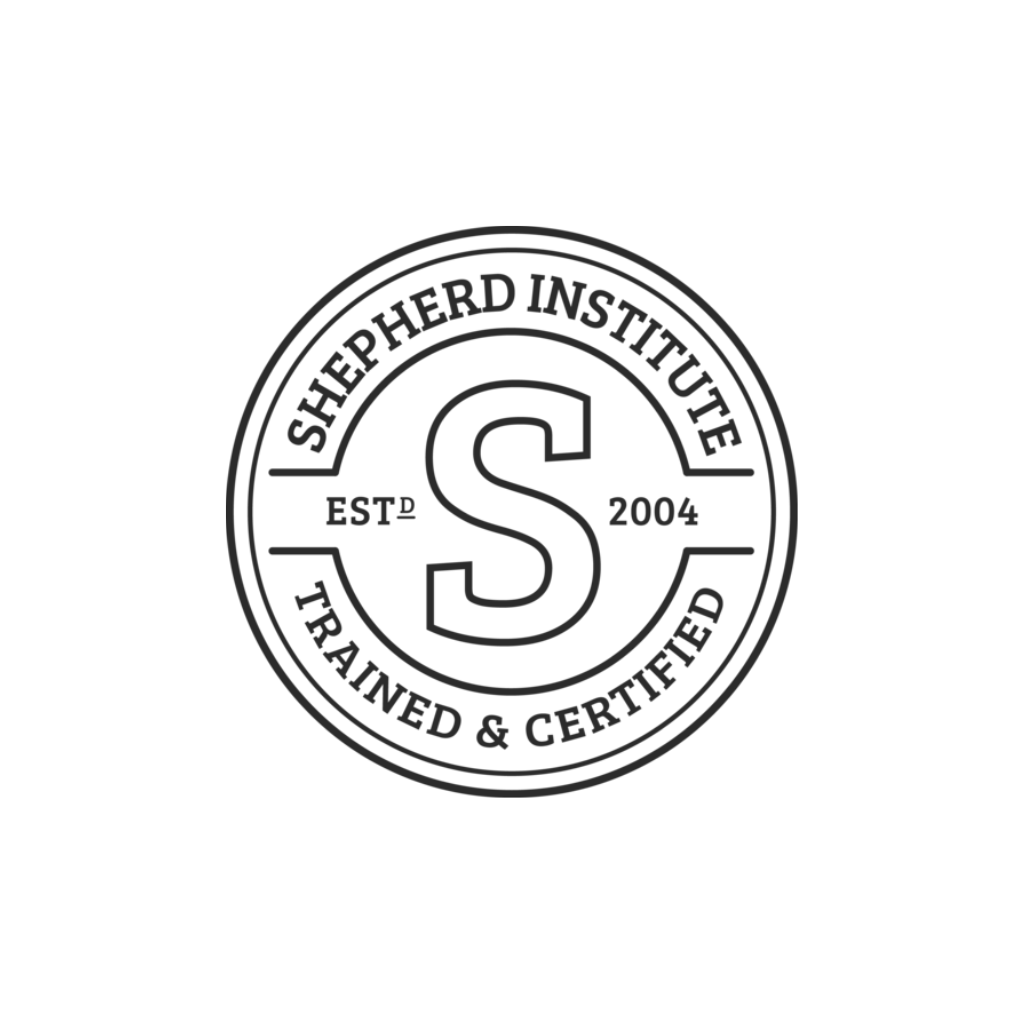- Intense Itching (Although only about 50% of people itch, so it’s not always a sign)
- A tickling feeling of something moving.
- Sores that develop from scratching the itchiness caused by lice.
- Irritability and difficulty sleeping.
- Red bumps on the head/neck and/or shoulders.
- The appearance of small white objects in the hair. These are lice eggs, also called “nits” which appear on hair shafts and feel like a small knot in the hair when you feel with your fingers. It also doesn’t move.
- Intense Itching (Although only about 50% of people itch, so it’s not always a sign)
- A tickling feeling of something moving.
- Sores that develop from scratching the itchiness caused by lice.
- Irritability and difficulty sleeping.
- Red bumps on the head/neck and/or shoulders.
- The appearance of small white objects in the hair. These are lice eggs, also called “nits” which appear on hair shafts and feel like a small knot in the hair when you feel with your fingers. It also doesn’t move.
Lice are tiny, six legged insects that crawl and lay eggs on the hair and feed off the scalp. A louse, on the head, can live up to 30 days. Each female louse can lay 6-10 eggs a day. Within a week or so, a nit hatches and goes through three stages as a Nymph before reaching adulthood.
A female louse, once fertilized, can immediately begin to lay eggs. One male louse can fertilize every present female. Off the head, a louse can live up to 24 hours but can not lay eggs without the presence of hair. A nit removed from the hair, cannot hatch without the incubation and warmth of the head.
Lice are tiny, six legged insects that crawl and lay eggs on the hair and feed off the scalp. A louse, on the head, can live up to 30 days. Each female louse can lay 6-10 eggs a day. Within a week or so, a nit hatches and goes through three stages as a Nymph before reaching adulthood.
A female louse, once fertilized, can immediately begin to lay eggs. One male louse can fertilize every present female. Off the head, a louse can live up to 24 hours but can not lay eggs without the presence of hair. A nit removed from the hair, cannot hatch without the incubation and warmth of the head.
There are many ways to know if a child has contracted a case of head lice. The most obvious way is the usual itchy scalp commonly (but not always) found in lice cases. As the bug feeds, it secretes saliva, which keeps the blood from clotting, making its feeding process easier. As the saliva builds up, the itching “symptom” will most likely appear in 10-14 days.
The itching is an allergic reaction and like most allergies, not everyone reacts. As many as 50% of the individuals with head lice NEVER itch. Pay special attention to the signs of head lice to catch it earlier. Also, observing nits and/or bugs on the hair is a clear sign of lice. The only way to confirm your suspicions is with a thorough examination of the child’s hair.
We need to also remember that head lice can lay eggs twice a day. Since they generally travel in harems, you’ll end up with 6, 8 or even more head lice, with each female laying 6-10 nits a day! Just imagine how severe a case can become by the time you notice the itching. The best way to stay on top of this ever increasing problem is by conducting routine head checks and using prevention products. This allows you to control the problem before it controls you.
There are many ways to know if a child has contracted a case of head lice. The most obvious way is the usual itchy scalp commonly (but not always) found in lice cases. As the bug feeds, it secretes saliva, which keeps the blood from clotting, making its feeding process easier. As the saliva builds up, the itching “symptom” will most likely appear in 10-14 days.
The itching is an allergic reaction and like most allergies, not everyone reacts. As many as 50% of the individuals with head lice NEVER itch. Pay special attention to the signs of head lice to catch it earlier. Also, observing nits and/or bugs on the hair is a clear sign of lice. The only way to confirm your suspicions is with a thorough examination of the child’s hair.
We need to also remember that head lice can lay eggs twice a day. Since they generally travel in harems, you’ll end up with 6, 8 or even more head lice, with each female laying 6-10 nits a day! Just imagine how severe a case can become by the time you notice the itching. The best way to stay on top of this ever increasing problem is by conducting routine head checks and using prevention products. This allows you to control the problem before it controls you.
Check the “Hot Spots”: the bangs, crown of the head, around the ears (particularly on the back side), the nap of the neck; these are the favorite areas for bugs to congregate and lay their eggs.
Long Hair: Grasp hair into imaginary ponytail, pull hair down in thin layers working towards the top of the head, examine hair and scalp for evidence of lice. (Evidence = nits or bugs).
Short Hair: Use a rat tail comb to fan the hair, working in sections and examining the hair and scalp for any evidence of lice.
If a positive case is found, immediate treatment of the affected individual should proceed. Immediate family should also be checked, as lice is highly contagious.
Check the “Hot Spots”: the bangs, crown of the head, around the ears (particularly on the back side), the nap of the neck; these are the favorite areas for bugs to congregate and lay their eggs.
Long Hair: Grasp hair into imaginary ponytail, pull hair down in thin layers working towards the top of the head, examine hair and scalp for evidence of lice. (Evidence = nits or bugs).
Short Hair: Use a rat tail comb to fan the hair, working in sections and examining the hair and scalp for any evidence of lice.
If a positive case is found, immediate treatment of the affected individual should proceed. Immediate family should also be checked, as lice is highly contagious.
Lice Removal by Magic Hands, a professional lice treatment center, is a community resource available to assist you in all of your lice needs.
Located in Signal Hill, we are a full service expert head lice removal salon providing head checks, complete NON-TOXIC nit and lice removal, education and awareness, and safe and natural products.
Lice Removal by Magic Hands, a professional lice treatment center, is a community resource available to assist you in all of your lice needs.
Located in Signal Hill, we are a full service expert head lice removal salon providing head checks, complete NON-TOXIC nit and lice removal, education and awareness, and safe and natural products.
Read on for and in depth look at what treatment options are out thereAND whymany of them are ineffective and full of harmful chemicals!
If you or your child is experiencing symptoms of head lice, contact us as soon as possible to get the effective treatments you need.
There are many different treatment options to remove head lice:
1. Over the Counter Products
2. Prescription Products
3. Heated Air Device
4. Home Remedies
5. The Shepherd Method - best and most effective.Safe and NON-TOXIC way to manually remove lice and nits. This is the service we provide at Lice Removal by Magic Hands, so why waste time and money on other treatments that will not be 100% effective in removing the nits and are full of potentially harmful chemicals and pesticides.
Read on for and in depth look at what treatment options are out thereAND whymany of them are ineffective and full of harmful chemicals!
If you or your child is experiencing symptoms of head lice, contact us as soon as possible to get the effective treatments you need.
There are many different treatment options to remove head lice:
1. Over the Counter Products
2. Prescription Products
3. Heated Air Device
4. Home Remedies
5. The Shepherd Method - best and most effective.Safe and NON-TOXIC way to manually remove lice and nits. This is the service we provide at Lice Removal by Magic Hands, so why waste time and money on other treatments that will not be 100% effective in removing the nits and are full of potentially harmful chemicals and pesticides.
Do they work? Although some may kill adult lice, and others may kill some of the nits (eggs), NONE of these will kill all the nits, except for the service we provide which is a strand by strand manual removal of live bugs and all nits.
The bottom line is there is no short cut. Manual nit removal is still required with all these methods. Using the best nit comb on the market (proved thru product testing) the Nit Free Terminator Comb is the only way to ensure complete nit removal, when used along with manual removal. Don’t settle for less.
INEFFECTIVE TREATMENTS - THE FACTS
Over the Counter Treatments
Over the counter treatments contain permethrin/pyrethin, which is derived from Chrysanthemums. Children and adults exposed to these products can have symptoms of redness, swelling, excessive itching, and respiratory distress. In addition, according to WebMD, exposure to Pyrethrin might make Asthma symptoms worse.
Published research indicates that 80% of adult lice are resistant to these over the counter treatments. Over the Counter chemical treatments such as Rid and Nix, have become less and less effective over the years as the bugs have evolved to become more resistant to them.
They are marginal at best when it comes to killing lice eggs. These products shouldn’t be used around cats because felines are especially sensitive to this class of drug. As a general rule, younger children have thinner skin, making them more susceptible to chemical absorption, and they are more vulnerable to the possible side effects of pesticides. Some studies have drawn connections between overuse of these products with Leukemia and Autism.
Prescription Products
Benzyl Alcohol
Benzyl Alcohol is a fairly new lice treatment on the market. It is a topical lotion available by prescription only and is used to smother adult lice. Possible side effects include skin or eye itching, redness and irritation. It costs about $140 for 7.7oz and unfortunately does nothing to remove nits (eggs). They still must be manually removed through combing.
Ivermectin (Sklice)
A topical lotion for children 6 months and older and people under 65 years old. It claims to kill live lice but not their eggs. Possible side effects include conjunctivitis, eye irritation, dandruff, dry skin, and a burning sensation on the skin. Hefty price tag of $300 for 4 ounces.
Lindane
This topical lotion is banned in California, and Consumers Union petitioned the Food and Drug Administration to outlaw this neurotoxin, possibly carcinogenic pesticide, as a lice treatment in the early 1980’s. It has been banned from 53 countries. But it’s still on the market as a prescription drug for lice despite reports of seizures and even deaths from improper use. And it’s the only lice treatment that carries a black box warning (the worst kind).
Malathion
Malathion is a topical lotion for children 6 and over. It is a neurotoxin and is ironically commonly prescribed by doctors to treat a head lice infestation. It is extremely flammable and in order to be somewhat effective, needs to be left on for 8-12 hours.
Any source of heat, such as a hair dryer, could cause your childs hair to go up in flames. Malathion can cause serious side effects such as nosebleeds, flu-like symptoms, and a burning sensation on the scalp. Manual nit removal is still required with this product. Generic version will cost about $210. While the real thing will run closer to $255 for 2 ounces.
Controlled Heated Air Devices
While applying heat such as from a hair dryer device can help to dry out the eggs, these Special Controlled Heated Air Devices, promoted by some companies, are a technology that aims to dehydrate the eggs and kill all three stages of head lice. The claims of this device have not been substantiated by any independent studies or research, and are based on the company’s own studies.
This type 1 medical device is cleared by the FDA for marketing purposes only and the data stating their efficacy has not been reviewed or substantiated by the FDA. In addition, Controlled Heated Air Devices are not safe for children under the age of 3, those with sensory deficits or anyone with open scabs from scratching. Potential side effects from these devices can be scalp burns, dry, damaged and brittle hair from excessive drying and combing on dry hair.
Per the companies own literature, “live lice and bugs will remain in the hair after treatment, as well as dead lice and nits. Manual removal is still necessary.
Home Remedies such as Cetaphil, Vaseline and Olive Oil
These types of treatments rely on smothering the bugs. These products must remain on the hair for 8-12 hours at a time and must be repeated 3-4 times over a period of weeks to get rid of all the lice. These treatments do NOT get rid of the nits and thorough combing is still necessary to make sure everything is removed from the hair.
Kerosene/Motor Oil/Gasoline: NEVER NEVER NEVER ATTEMPT TO USE THESE!!!
We can’t even believe that anyone would ever consider a method like this, but never-the-less, we at Lice Removal by Magic Hands just want to remind you these are HORRIBLY DANGEROUS EXTREMELY OUTDATED and POTENTIALLY LETHAL methods. NEVER ATTEMPT!!!!
Do they work? Although some may kill adult lice, and others may kill some of the nits (eggs), NONE of these will kill all the nits, except for the service we provide which is a strand by strand manual removal of live bugs and all nits.
The bottom line is there is no short cut. Manual nit removal is still required with all these methods. Using the best nit comb on the market (proved thru product testing) the Nit Free Terminator Comb is the only way to ensure complete nit removal, when used along with manual removal. Don’t settle for less.
INEFFECTIVE TREATMENTS - THE FACTS
Over the Counter Treatments
Over the counter treatments contain permethrin/pyrethin, which is derived from Chrysanthemums. Children and adults exposed to these products can have symptoms of redness, swelling, excessive itching, and respiratory distress. In addition, according to WebMD, exposure to Pyrethrin might make Asthma symptoms worse.
Published research indicates that 80% of adult lice are resistant to these over the counter treatments. Over the Counter chemical treatments such as Rid and Nix, have become less and less effective over the years as the bugs have evolved to become more resistant to them.
They are marginal at best when it comes to killing lice eggs. These products shouldn’t be used around cats because felines are especially sensitive to this class of drug. As a general rule, younger children have thinner skin, making them more susceptible to chemical absorption, and they are more vulnerable to the possible side effects of pesticides. Some studies have drawn connections between overuse of these products with Leukemia and Autism.
Prescription Products
Benzyl Alcohol
Benzyl Alcohol is a fairly new lice treatment on the market. It is a topical lotion available by prescription only and is used to smother adult lice. Possible side effects include skin or eye itching, redness and irritation. It costs about $140 for 7.7oz and unfortunately does nothing to remove nits (eggs). They still must be manually removed through combing.
Ivermectin (Sklice)
A topical lotion for children 6 months and older and people under 65 years old. It claims to kill live lice but not their eggs. Possible side effects include conjunctivitis, eye irritation, dandruff, dry skin, and a burning sensation on the skin. Hefty price tag of $300 for 4 ounces.
Lindane
This topical lotion is banned in California, and Consumers Union petitioned the Food and Drug Administration to outlaw this neurotoxin, possibly carcinogenic pesticide, as a lice treatment in the early 1980’s. It has been banned from 53 countries. But it’s still on the market as a prescription drug for lice despite reports of seizures and even deaths from improper use. And it’s the only lice treatment that carries a black box warning (the worst kind).
Malathion
Malathion is a topical lotion for children 6 and over. It is a neurotoxin and is ironically commonly prescribed by doctors to treat a head lice infestation. It is extremely flammable and in order to be somewhat effective, needs to be left on for 8-12 hours.
Any source of heat, such as a hair dryer, could cause your childs hair to go up in flames. Malathion can cause serious side effects such as nosebleeds, flu-like symptoms, and a burning sensation on the scalp. Manual nit removal is still required with this product. Generic version will cost about $210. While the real thing will run closer to $255 for 2 ounces.
Controlled Heated Air Devices
While applying heat such as from a hair dryer device can help to dry out the eggs, these Special Controlled Heated Air Devices, promoted by some companies, are a technology that aims to dehydrate the eggs and kill all three stages of head lice. The claims of this device have not been substantiated by any independent studies or research, and are based on the company’s own studies.
This type 1 medical device is cleared by the FDA for marketing purposes only and the data stating their efficacy has not been reviewed or substantiated by the FDA. In addition, Controlled Heated Air Devices are not safe for children under the age of 3, those with sensory deficits or anyone with open scabs from scratching. Potential side effects from these devices can be scalp burns, dry, damaged and brittle hair from excessive drying and combing on dry hair.
Per the companies own literature, “live lice and bugs will remain in the hair after treatment, as well as dead lice and nits. Manual removal is still necessary.
Home Remedies such as Cetaphil, Vaseline and Olive Oil
These types of treatments rely on smothering the bugs. These products must remain on the hair for 8-12 hours at a time and must be repeated 3-4 times over a period of weeks to get rid of all the lice. These treatments do NOT get rid of the nits and thorough combing is still necessary to make sure everything is removed from the hair.
Kerosene/Motor Oil/Gasoline: NEVER NEVER NEVER ATTEMPT TO USE THESE!!!
We can’t even believe that anyone would ever consider a method like this, but never-the-less, we at Lice Removal by Magic Hands just want to remind you these are HORRIBLY DANGEROUS EXTREMELY OUTDATED and POTENTIALLY LETHAL methods. NEVER ATTEMPT!!!!



